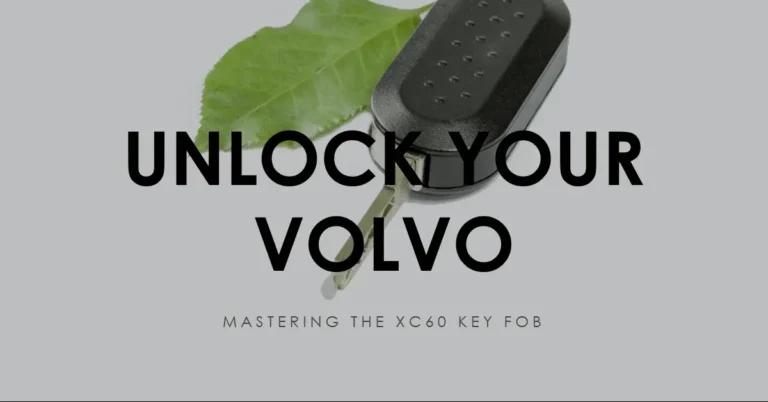How Long Does a Regen Take on a Volvo?
Picture this: You’re driving your Volvo truck when a light on your dashboard suddenly starts flashing. Uh-oh, it’s regen time! If you’re scratching your head wondering what that means, don’t worry. We’re about to dive into the world of Volvo Regens and trust me; it’s not as complicated as it sounds.
So, how long does a regen take on a Volvo? Well, it depends on the regen type, but generally, it can take 5 minutes to an hour. Don’t run off just yet! There’s much more to learn about this process that keeps your truck running smoothly and clean.
Understanding Volvo Diesel Particulate Filter (DPF) Regeneration
What is DPF Regeneration?
Let’s break it down in simple terms. You know how your body needs to get rid of waste, right? Well, your Volvo truck needs to do the same thing. DPF regeneration is like your truck taking a bathroom break to eliminate all the gunk (soot) that builds up in its engine.
This soot comes from burning diesel fuel. If we let it build up, it’s like your truck trying to breathe with a stuffy nose. Not fun! That’s why Volvo Trucks has this cool system called DPF regeneration. It’s like a self-cleaning oven for your truck’s engine, keeping everything running smoothly and ensuring your truck doesn’t pollute the air too much.
Types of DPF Regeneration in Volvo Trucks
Now, let’s talk about how your Volvo truck can clean itself. It’s like how you might clean your room – sometimes you do a little tidying up, and other times you need to do a deep clean.
Passive Regeneration
Think of passive regeneration as your truck cleaning itself while you’re driving. It’s like multitasking – your truck is burning off soot while you’re cruising down the highway. Pretty neat, huh? This usually happens when driving at highway speeds, and you might not even notice it happening.
Active Regeneration
Active regeneration is when your truck says, “Whoa, there’s too much soot here!” It’s like when you realize your room is getting messy and decide to clean up. Your truck automatically starts burning off the extra soot. This might happen while you’re driving, and you might notice your fuel consumption increases a bit during this time.
Parked (Manual) Regeneration
This is the deep clean I mentioned earlier. Sometimes, your truck needs to sit still to get clean. It’s like when you need to move furniture to vacuum underneath. You’ll need to park your truck and start the process manually. Don’t worry; your truck will tell you when it needs this cleaning.
Factors Affecting Regeneration Time in Volvo Trucks
The Type of Regeneration
Remember how we talked about different types of cleaning? Well, each type takes a different amount of time.
Passive regen is the quickest – like a 5-10-minute tidy-up while driving on the highway. Active regen takes a bit longer, usually about 10-30 minutes, depending on how much cleaning is needed. It’s like doing a quick vacuum of your room.
Now, parked regen is the marathon of the cleaning world. It can take anywhere from 45 minutes to an hour. Good things take time, right? It’s like deep cleaning your entire house – it takes a while, but it feels good when it’s done!
Soot Load and Engine Condition
Here’s where things get a bit tricky. The more soot your truck has built up, the longer it’ll take to clean. It’s like trying to clean a muddy dog – the muddier they are, the longer bath time takes!
That’s why taking good care of your truck is super important. Regular check-ups and maintenance can help keep soot buildup to a minimum. It’s like brushing your teeth daily – a little effort now saves a lot of trouble later!
How to Know When Your Volvo Needs a Regen
Monitoring Soot Load
Your Volvo truck is pretty smart – it’ll let you know when it needs to clean itself. There are lights on your dashboard that’ll start flashing when it’s regen time. It’s like your truck saying, “Hey, I could use a bath!”
Here’s a pro tip: If you notice these lights coming on more often, it might be time for a manual regen. It’s better to do it sooner rather than later – like taking out the trash before the bin starts overflowing!
Warning Signs of Regeneration Issues
Sometimes, things don’t go quite as planned. If you notice that regimens are taking longer than usual or have to do them more often, it might be a sign that something’s not quite right. It’s like if your washing machine started taking twice as long to do a load of laundry – you’d know something was up, right?
If you see engine lights coming on or notice any other unusual behavior, it’s best to get your truck checked out. Better safe than sorry!
What Happens if You Don’t Let a Regen Finish?
Consequences of Incomplete Regeneration
Imagine if you stopped washing your hair halfway through a shower – not great, right? The same goes for your truck’s regen process. If you don’t let it finish, all that soot stays there. This can lead to all sorts of problems, from your truck not running as well to potentially damaging the engine.
Sometimes, your truck might even go into “derate” mode. It’s like when your phone goes into low power mode – everything slows down to protect the system. It’s not ideal when you’re trying to make deliveries on time!
Forced Regeneration: Last Resort
If things get bad, you might need to take your truck to a service center for a forced regen. This is like taking your incredibly muddy dog to a professional groomer – it takes longer (often more than an hour) and costs more, but sometimes it’s necessary.
The good news is, if you take care of your truck and let it do its regular cleaning, you probably won’t need to deal with this!
Volvo Regen Best Practices
How to Make Regens More Efficient
Want to help your truck clean itself faster? Here are a few tricks:
- Try to maintain highway speeds (around 60 mph) when you can. It’s like how running helps you sweat out toxins – driving at these speeds helps your truck burn off soot more efficiently.
- Avoid stop-and-start driving when possible. It’s like trying to shower while someone keeps turning the water on and off – not very effective!
Maintenance Tips to Minimize Regen Frequency
Taking care of your truck is like taking care of your health – a little prevention goes a long way. Here are some tips:
- Keep up with your oil changes. Clean oil helps your engine run cleaner, which means less soot.
- Use good quality fuel. It’s like eating healthy food – better fuel means a healthier engine.
- If you notice any engine issues, get them checked out pronto. A small problem can turn into a big one if you ignore it!
Frequently Asked Questions About Volvo DPF Regen
How Often Should a Volvo Truck Regen?
This is like asking how often you should shower – it depends on what you’ve been doing! For trucks, it depends on your driving conditions. Typically, you might see a regen every 200-600 miles. But don’t worry if yours is different – every truck has its rhythm.
Can You Drive During a Regen?
Good news – for passive and active regens, you can keep on truckin’! It’s only during a parked regen that you need to, well, park. It’s like how you can walk and chew gum simultaneously, but you probably shouldn’t try to run and eat a sandwich!
What’s the Cost of Not Regenerating Properly?
Remember how we talked about taking care of your truck? If you don’t, it could cost you a lot of time. Replacing a damaged PDF can set you back $2,000 to $4,000. That’s a lot of cheeseburgers! So, it’s worth taking the time to let your truck do its thing.
And there you have it, folks! Everything you ever wanted to know about Volvo regens (probably more). Remember, a clean truck is a happy truck. So next time your dashboard lights up, don’t panic – your truck’s just asking for a little TLC. Happy trucking!







